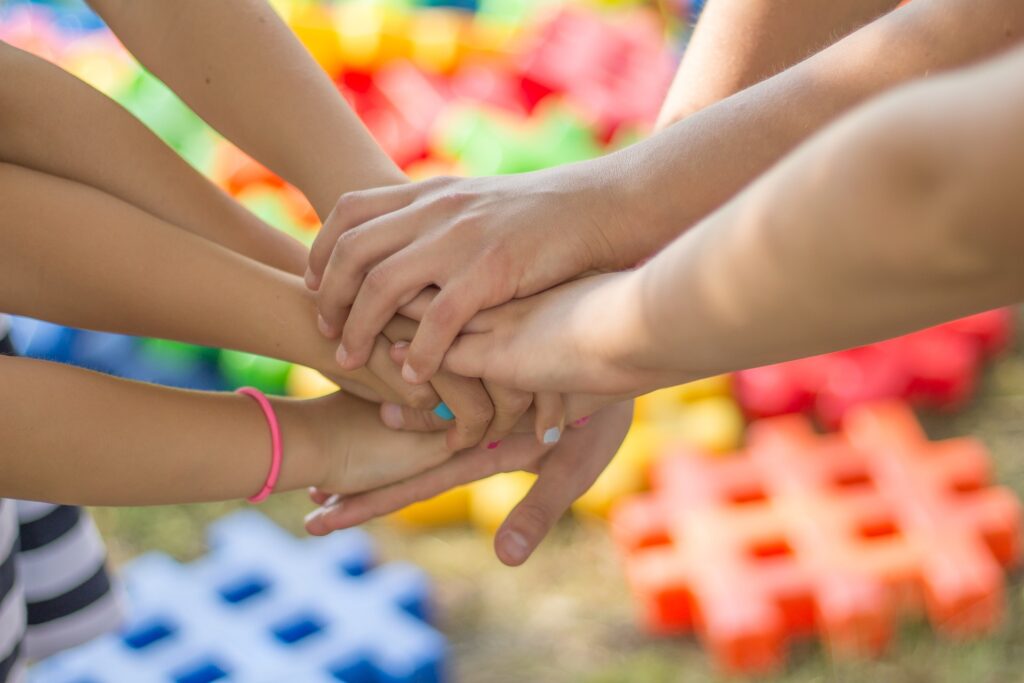The Joy of Unstructured Play: Letting Kids Be Kids

Why Unstructured Play is the Bomb for Your Kids.
Hey there, fellow parents! Caught up in the hustle and bustle of daily life, constantly juggling schedules, school work, and extracurricular activities for our little ones. In this fast-paced world, it’s easy to forget the simple joy of unstructured play. Not all playtime needs to be scheduled or have a million rules. In fact, the free-for-all kind of play, also known as unstructured play, is where the real magic happens. Unstructured play could be one of the best things you can do for their development.
Yes, you heard it right! So, let’s ditch the drill sergeant routine for a sec and get down to the nitty-gritty of why unstructured play rocks and discover its amazing benefits.
What is Unstructured Play?
Unstructured play, also known as free play, is a type of play that allows children to explore, create, and imagine without any specific rules or guidelines. It is the kind of play where kids can let their imaginations run wild, where they can be the architects of their own adventures, and where they can simply be kids.
Benefits Galore!
Now that we know what unstructured play is all about, let’s explore the incredible benefits it offers:
Boosts Creativity and Imagination
Think of your kid’s brain as a brand new playground (full of potential for epic forts and crazy adventures, of course). Unstructured play lets them be the architects, building their imagination and creativity. Whether they’re building a fort out of blankets or creating an imaginary world with their toys, they get to make up the rules. They solve problems their own way, and who knows, maybe even invent the next fidget spinner (hey, a win’s a win!).
Develops Problem-Solving Skills
When children engage in unstructured play, they often encounter obstacles and challenges along the way. Whether it’s figuring out how to balance on a bike or building a tower with blocks, these experiences help them develop problem-solving skills. They learn to think critically, experiment with different solutions, and overcome obstacles through trial and error.
Enhances Social Skills
Unstructured play provides an excellent opportunity for children to interact with their peers, siblings, or even parents. Whether they’re playing a game of make-believe or building a sandcastle together.
Remember those awkward schoolyard days trying to make friends? Unstructured play is like a social butterfly bootcamp for your kiddos. They learn to share (sometimes…okay, maybe after a few negotiations), take turns, and work together. Basically, all the essential skills to become the coolest kid on the playground (or at least score an invite to the next birthday bash). Social interactions help kids develop those all important social skills.


Fosters Independence and Self-Confidence
Look out world, here comes your mini-me, overflowing with confidence! Unstructured play lets them explore, experiment, and maybe even face-plant a few times (don’t worry, that’s how they learn!). They figure things out on their own, which gives them a superhero-worthy sense of accomplishment and a whole lotta self-belief.
When children engage in unstructured play, they have the freedom to make their own decisions and take charge of their playtime. This sense of independence allows them to build self-confidence and develop a positive self-image. They learn to trust their instincts, make choices, and take risks without constant adult supervision.
Encourages Physical Activity
In today’s digital age, it’s easy for children to get caught up in screen time and sedentary activities. Unstructured play, on the other hand, encourages kids to get moving and engage in physical activities. Whether it’s running, jumping, climbing, or playing a game of tag, unstructured play keeps them active and promotes overall physical well-being.
How to Encourage Unstructured Play
Now that you’re convinced about the wonders of unstructured play, here are a few tips to encourage it:
Create a Safe and Stimulating Environment
Set up a play area that is safe and conducive to unstructured play. Provide a variety of toys, art supplies, and open-ended materials that allow children to explore and create. Let their imaginations take the lead!
Check Out Melissa and Doug on Amazon.
Melissa and Doug have a fantastic range of wooden toys that could encourage the creative side of unstructured play, check them out on Amazon.
Limit Screen Time
Is your child glued to the tablet? Offer an enticing swap! Suggest an outdoor activity, some arts and crafts, or even a fort-building extravaganza. While technology has its benefits, it’s important to set limits on screen time.
Designate certain zones in your house as tech-free zones, like bedrooms and the dinner table. This creates pockets of time where screens are off-limits, naturally nudging them towards other activities.
Lead by Example: Kids are copycats, so be mindful of your own screen time. Put your phone down during playtime and show them the joy of unplugging.
Embrace Messiness
Unstructured play can sometimes get messy, and that’s okay! Messiness can spark inspiration and ignite the imagination. It allows for breaking free from the rigid and embracing the unexpected. A cluttered desk might be a sign of a disorganized mind, but it could also be a hotbed of creativity waiting to erupt!
Life isn’t a perfectly manicured lawn – it’s more like a jungle gym with tangled vines and hidden treasures. Embracing the mess means accepting that things won’t always be neat and tidy, and that’s okay. It allows for exploration, experimentation, and ultimately, growth. We learn from our mistakes (even the messy ones!), and sometimes the most beautiful creations come from unexpected chaos.
Allow for Boredom
Yes, you read that right. Boredom can actually be a catalyst for unstructured play. When children are bored, they are forced to tap into their creativity and come up with their own entertainment. So, resist the urge to constantly provide them with structured activities and let them discover the joy of unstructured play on their own. This free space allows their imagination to run wild! They start thinking outside the box, inventing games, and coming up with creative solutions. Think of boredom as a springboard for their inner Picasso to emerge.
We all know the “I’m bored” whines. But instead of jumping in to entertain them every time, resist the urge! Boredom teaches them self-reliance. It pushes them to think for themselves, figure out how to occupy their time, and become resourceful little problem-solvers.
Life isn’t always sunshine and rainbows. There will be times when kids get bored, frustrated, and maybe even a little cranky. That’s okay! Learning to cope with boredom and navigate those negative feelings is a valuable life skill. They’ll develop their frustration tolerance and discover healthy ways to self-soothe.
Let the Magic Unfold
Unstructured play is a magical time in a child’s life. It allows them to explore, create, and learn in ways that structured activities simply cannot replicate. So, let’s embrace the joy of unstructured play and give our children the gift of a childhood filled with imagination, creativity, and endless possibilities!
Your kids will have a blast, learn a ton along the way, and you might even rediscover the joy of a good old-fashioned pillow fort (wink wink). Now get out there and play!
Take a look around the rest of our blog for other helpful hints and tips.
If you want some inspiration for other toys and game or things to do with the kids check out our sister site Playtime Bytes.
*As an Amazon Associate, I earn commission from qualifying purchases.
